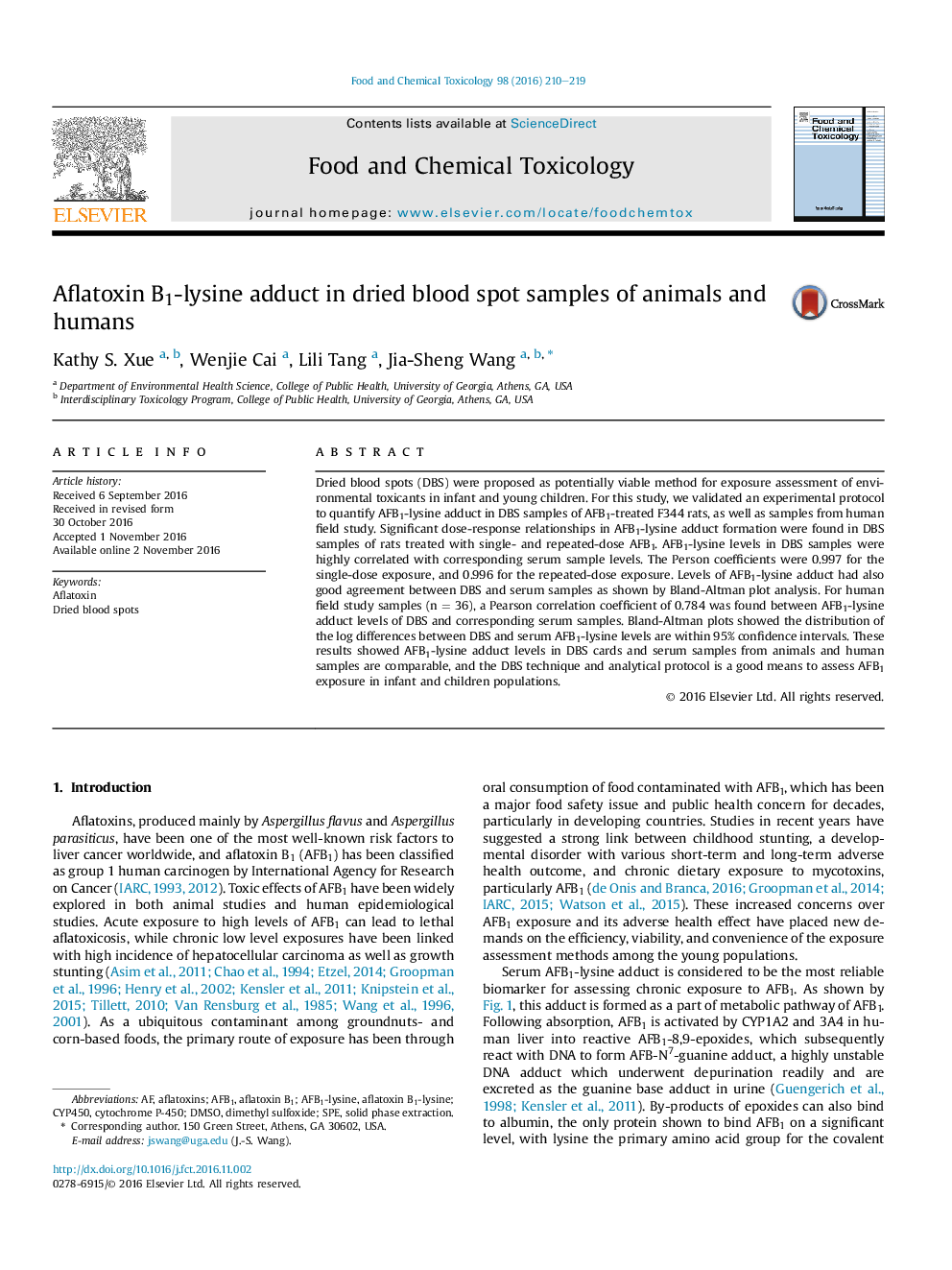| Article ID | Journal | Published Year | Pages | File Type |
|---|---|---|---|---|
| 5560411 | Food and Chemical Toxicology | 2016 | 10 Pages |
â¢Validated a quantitative method for analyzing AFB1-lysine adduct in dried blood spots.â¢AFB1-lysine adduct level in DBS showed significant dose-response to exposed AFB1 levels in F344 rats.â¢High correlation and agreement found between AFB1-lysine levels in DBS and serum samples of both F344 rats and human.
Dried blood spots (DBS) were proposed as potentially viable method for exposure assessment of environmental toxicants in infant and young children. For this study, we validated an experimental protocol to quantify AFB1-lysine adduct in DBS samples of AFB1-treated F344 rats, as well as samples from human field study. Significant dose-response relationships in AFB1-lysine adduct formation were found in DBS samples of rats treated with single- and repeated-dose AFB1. AFB1-lysine levels in DBS samples were highly correlated with corresponding serum sample levels. The Person coefficients were 0.997 for the single-dose exposure, and 0.996 for the repeated-dose exposure. Levels of AFB1-lysine adduct had also good agreement between DBS and serum samples as shown by Bland-Altman plot analysis. For human field study samples (n = 36), a Pearson correlation coefficient of 0.784 was found between AFB1-lysine adduct levels of DBS and corresponding serum samples. Bland-Altman plots showed the distribution of the log differences between DBS and serum AFB1-lysine levels are within 95% confidence intervals. These results showed AFB1-lysine adduct levels in DBS cards and serum samples from animals and human samples are comparable, and the DBS technique and analytical protocol is a good means to assess AFB1 exposure in infant and children populations.
